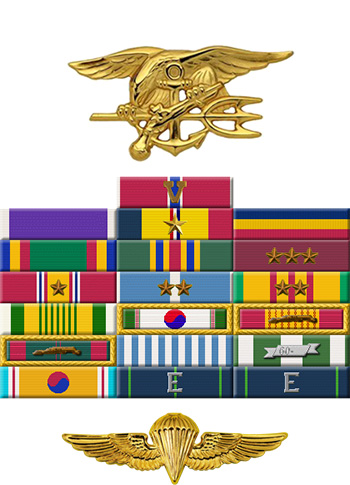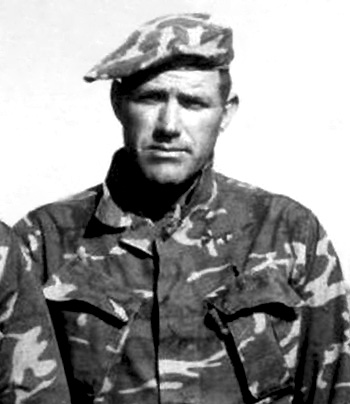
|
Walter G. Pope |
 |
|||
| Rank, Service | ||||
Petty Officer First Class E-6, U.S. Navy |
||||
| Veteran of: | ||||
|
||||
| Tribute: | ||||
Walter Pope was born on May 27, 1933, in Carthage, Tennessee. He enlisted in the U.S. Navy on June 30, 1952, and served during the Korean War before transferring to LCU Division 13 at NAB Coronado, California, in July 1954. His next assignment was with LCU Division 12 at NAB Coronado from August 1956 to July 1957, and then back with LCU Division 13 at NAB Coronado from July 1957 to March 1958. Petty Officer Pope then returned to LCU Division 12 from March 1958 to July 1962, followed by service at NAS Norfolk, Virginia, from August 1962 to August 1964. His next assignment was as a Boatswain's mate aboard the attack transport USS Bexar (APA-237) home-ported at San Diego, California, from September 1964 to July 1965, and then he attended Underwater Demolition Team Replacement Accession training with Class 36 (West Coast) at NAB Coronado from July to December 1965. Petty Officer Pope served with UDT-12 at NAB Coronado from December 1965 to April 1967, and then with SEAL Team ONE at NAB Coronado from April 1967 until he was killed in action while deployed with his Team to South Vietnam on April 29, 1968. Walter Pope was buried at Fort Rosecrans National Cemetery in San Diego, California. |
||||
|
||||

